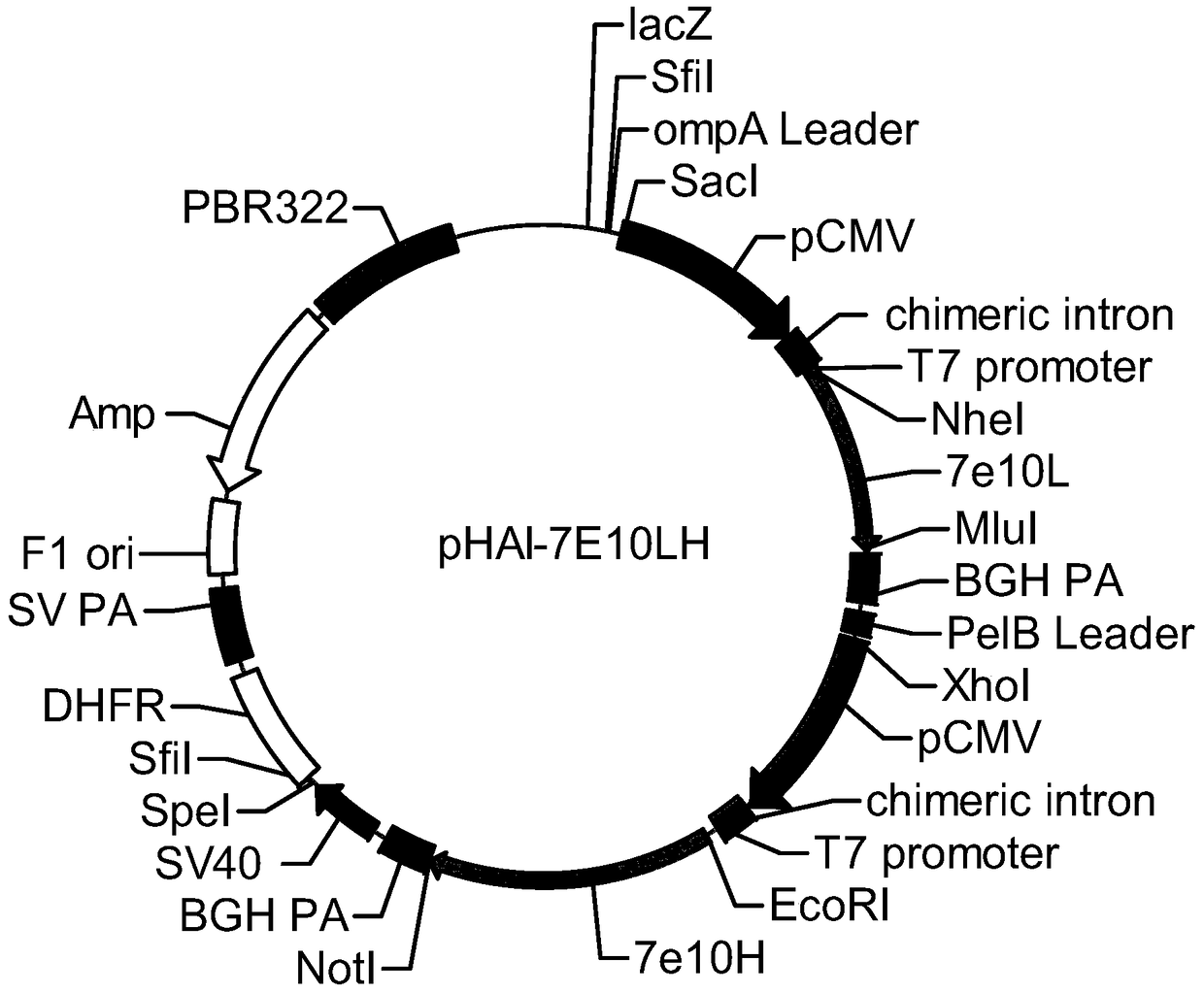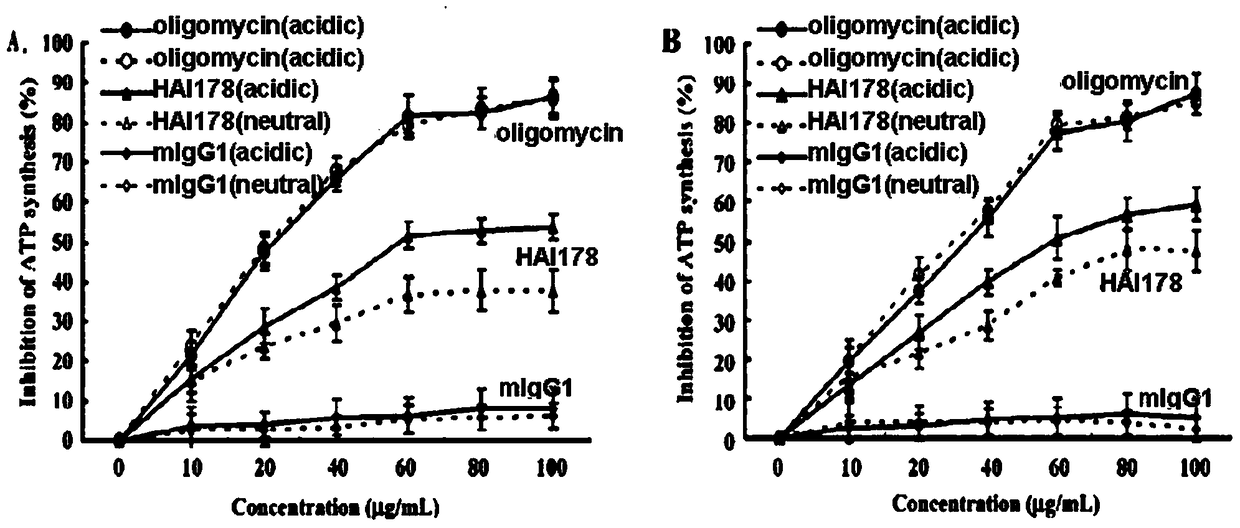A kind of human-mouse chimeric monoclonal antibody and its preparation method and application
A monoclonal antibody and antibody heavy chain technology, applied in the biological field, can solve the problems of mAb limitation and trough, and achieve the effect of inhibiting ATP synthesis
- Summary
- Abstract
- Description
- Claims
- Application Information
AI Technical Summary
Problems solved by technology
Method used
Image
Examples
Embodiment 1
[0058] Preparation of chimeric antibodies
[0059] 1) Preparation of mouse-specific monoclonal antibodies
[0060] A hybridoma cell line was obtained by conventional fusion of mouse splenocytes immunized with human ATP synthase antigen and mouse myeloma cells, and a positive clone hybridoma cell line was screened out and named: 7E10 (McAb178).
[0061] 2) Obtaining the 7E10Fab gene of mouse-specific monoclonal antibody clone
[0062] Take the positive clone hybridoma 7E10 cell line: 5000-10000 cells, use Trizol (product of Invitrogen Company) to isolate total RNA, and use reverse transcriptase (product of Invitrogen Company) to obtain cDNA. The above operations were carried out in accordance with the manufacturer's instructions. PCR was carried out with the following primers and conditions, and the amplification enzyme used was KOD plus (TOYOBO) to ensure that possible mutations were reduced during the amplification process.
[0063] There are 4 sets of amplification primer...
Embodiment 2
[0120] HAI178 antibody inhibits the activity of ATP synthase in tumor cell and vascular endothelial cell membrane
[0121] An important biological function of ATP synthase is to synthesize ATP. The amount of ATP produced can be used to measure the activity of ATP synthase on the cell membrane surface, so as to determine the effect of anti-HAI-178mAb on the function of ATP synthase. Cells at 5 x 10 4 Plant each well into a 96-well plate, suck off the culture supernatant after overnight, and carefully wash the cells once with PBS. Add 100 μL / well of phosphate buffer solution (pH7.2, also used as the drug diluent of the following groups) to the normal group, add different concentrations of oligomycin to the positive control group, add different concentrations of antibody diluent to the test group, and add corresponding concentrations to the negative control group Mouse anti-human IgG1, each group has 6 multiple wells, three of which are placed in 5% CO 2 (neutral pH), the other...
Embodiment 3
[0123] Analysis of the ability of HAI178 antibody to inhibit the proliferation of leukemia cells
[0124] HAI178 antibody treated leukemia cells, and analyzed its ability to inhibit the synthesis of ATP in cells. The experimental results showed that HAI178 antibody can significantly inhibit the ability of cells to synthesize ATP. When the antibody concentration reaches 200ug / ml, it can inhibit both HL-60 and MV4-11 cells. About 40% of ATP is synthesized. Further analysis of cell proliferation experiments showed that treatment with HAI178 antibody could significantly inhibit the growth of leukemia cells, and the proliferation inhibition rates of HL-60 and MV4-11 cells both reached about 50%, which was significantly dose-dependent. Such as image 3 Shown: The ATP synthesis experiments shown in Figures A and B were used to analyze the biological activity of HAI178. The experiments showed that in HL-60 (A) and MV4-11 (B) cells, HAI178 treatment can significantly inhibit the ATP s...
PUM
 Login to View More
Login to View More Abstract
Description
Claims
Application Information
 Login to View More
Login to View More - R&D
- Intellectual Property
- Life Sciences
- Materials
- Tech Scout
- Unparalleled Data Quality
- Higher Quality Content
- 60% Fewer Hallucinations
Browse by: Latest US Patents, China's latest patents, Technical Efficacy Thesaurus, Application Domain, Technology Topic, Popular Technical Reports.
© 2025 PatSnap. All rights reserved.Legal|Privacy policy|Modern Slavery Act Transparency Statement|Sitemap|About US| Contact US: help@patsnap.com



